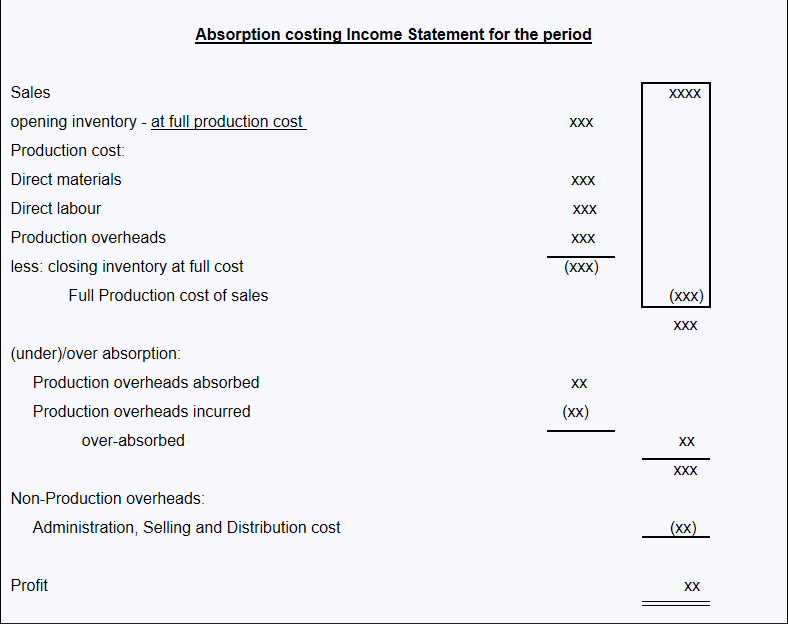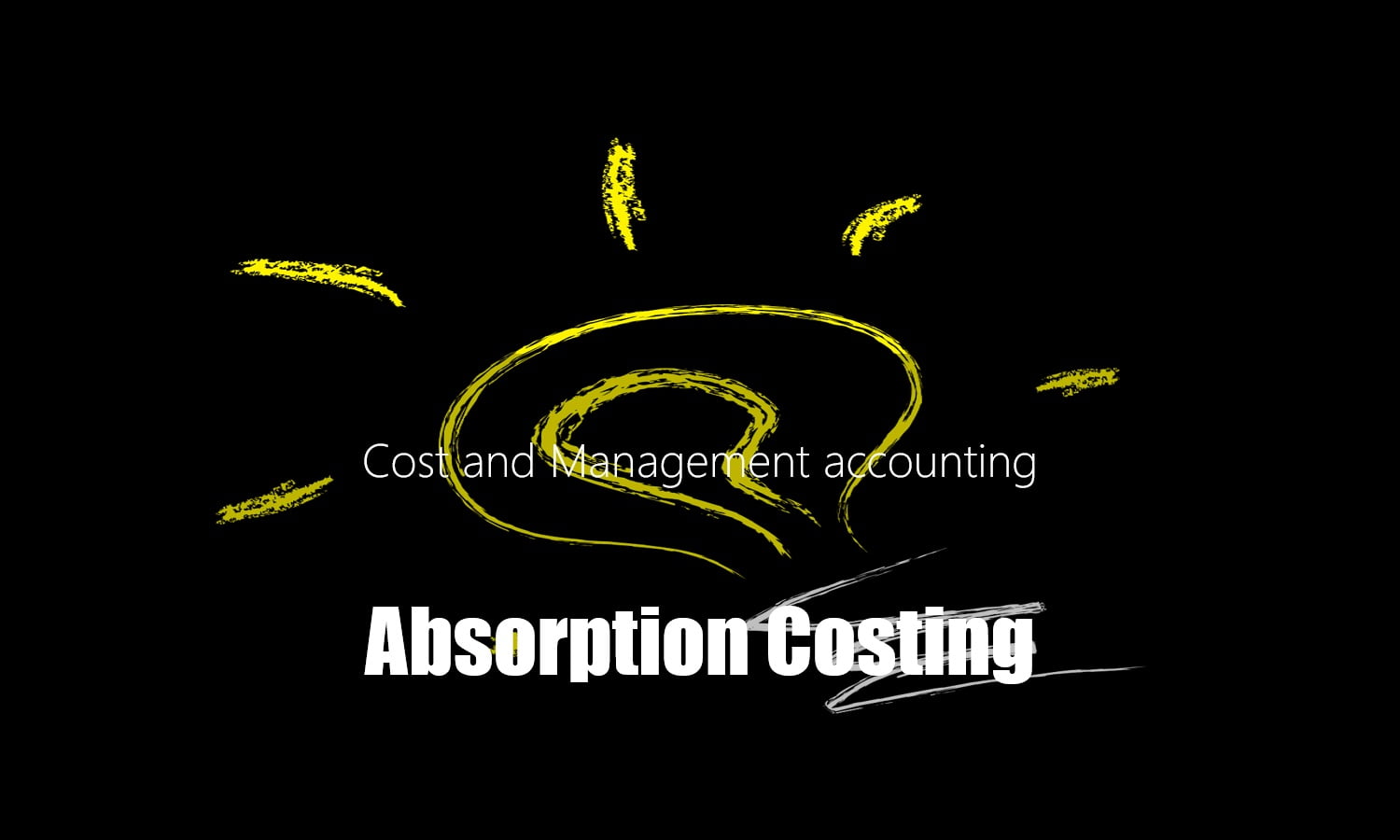Read more
- Introduction to Cost and Management Accounting
- High/Low and Linear Regression Analysis
- Inventory Management
- Accounting for Inventory
- Accounting for overheads
- Absorption Costing
- Marginal Costing
- Job Batch and Service costing
- Process Costing
- Target Costing
- Variances
- Standard Costing
- Cost Volume Profit analysis
- Relevant costing and Decision-Making Techniques
- Time Value of Money (TVM)
Absorption costing Overview
Meaning: Definition
It is a system of costing which measures cost of a product or a service as its direct costs and variable production overheads plus a share of fixed production overhead costs.
Reporting profit with Absorption
- Inventory is valued at the full cost of production (full costing) i,e which consists of direct material + direct labour cost + absorbed production overheads (fixed and variable production overheads), also known as ‘Full absorption costing’.
- Fixed production overheads may be under absorbed or over absorbed because the overhead absorption rate is predetermined.
Absorption costing format

Advantages of absorption and Disadvantages of absorption costing:
| Advantages | Disadvantages |
|
|
Comparison between Absorption and Marginal costing
- The profit calculated with marginal costing is different from the profit calculated with absorption.
- The difference in profit is due to entirely to the differences in the inventory valuation; as in absorption inventory cost includes a share of fixed production overheads i,e opening inventory contains fixed production overheads incurred in last period which is written off in the current period and closing inventory contains fixed production overheads that was incurred in this period but carried forward to be written off in the next period.
- When there is no change in the opening and closing inventory, exactly same profit will be reported using marginal costing and absorption.
| When there’s an Increase in inventory | When there’s a Decrease in inventory |
(i,e closing inventory is greater than opening)
|
(i,e closing inventory is greater than opening)
|
Profit Reconciliation: Between Absorption and Marginal costing
To calculate the difference between reported profit using marginal costing and the reported profit using absorption make follow simple calculations:
Step I
- Calculate increase/decrease in inventory during the period in units:(opening inventory absorption & marginal minus closing inventory absorption marginal).
Step II
- Calculate fixed production overhead cost per unit.
Step III
- The difference in profit is the increase or decrease in inventory quantity multiplied by the fixed overhead absorption rate.
Fully absorbed cost PDF
The above explained notes is the most simplified version. Moreover, click here to Download PDF

Leave a Reply
You must be logged in to post a comment.